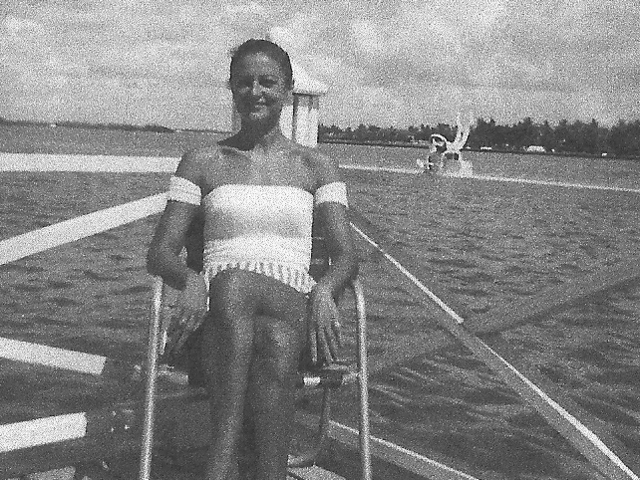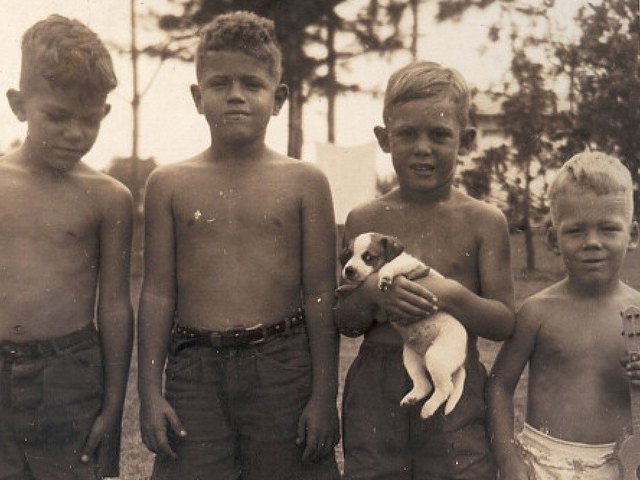In the late 1950s, my world consisted of my home, my neighborhood of Stillwater Drive and my school, St. Joseph’s. Life was so simple because there were no worries – at least not from the kids in our neighborhood.
We had moved from New York with my mother, Irene, and brother, Richard, after our parents’ divorce.
Mom decided on Miami Beach since she’d spent her honeymoon there and loved it. We moved into the “Pickwick Arms,” a small apartment building on Dickens and 74th Street. Living there was a pleasant experience since the owner, Mrs. G., was a grandmotherly figure and treated us like her own. Since my own grandparents, Vincenzo and Eleonora, hadn’t yet moved here, she and her husband were like surrogate grandparents.
When Nana and Nonno finally moved down from New York in 1955, they bought a waterfront property and built the house at Stillwater Drive. It is a street shaped like a peninsula, and we faced north, toward Indian Creek Island, looking toward the few mansions that were there at the time.
Since Nonno had retired early, at 59, he needed an outlet and he figured that fishing would be a good choice since we had the bay behind our home. Up early in the morning for fishing, Nonno would come home, clean up and then head to 71st Street to the stock market. Thankfully, he did quite well.
Talk about the simple life – after a year or two, when the palm trees had matured a bit, coconuts would fall from the trees and Richard and I would grab a hammer and screwdriver and work so hard to remove the husk of the coconut so that we could enjoy the juiciness of those coconuts.
Walking barefoot was the norm – almost like being on an island. Luckily, we had great neighbors to share our time.
Our neighbors, Lucky, Dottie and Mike, were avid fishermen and every Sunday we all would be gathered on our docks waiting for the big catch. The best part for us kids was watching either Lucky or Dottie clean the fish, scale it, gut it, etc. In those days, red snapper was the prize, and catfish, well, they’d throw them back.
The Laris family, a Greek-American family, had the only pool at that time and we’d be swimming, diving, racing, doing handstands, anything you could imagine people do in the pool.
I remember places like Dubrow’s Cafeteria on Lincoln Road and their delicious tuna sandwiches.
I remember lunching there with my mom and Nana and walking over to Saks – no mall in those days. Friday nights was often a trip to Fun Fair on the 79th Street Causeway (Treasure Island). Miniature golf, arcades, hot dogs with sauerkraut, ice cream – what a treat that was for Richard and me!
Roller skating at North Shore Park on Friday night was another weekly activity that I would partake in with a friend, Judy. There would be so many kids there and we’d just skate and skate to the music of that era, the late ‘50s, early ‘60s. We never got tired, and afterward, Judy’s dad would sometimes take a bunch of us girls to Parham’s for ice cream.
Our neighborhood was mostly Jewish, but everyone got along well. We’d put up Christmas lights and other neighbors would light their Menorah candles, and I would get to participate in that observance.
Almost twice a month, a group of us would go to the movies on Saturday, which featured the “kiddie” show from about noon until the beginning of the feature film. The Surf and Normandy theatres were the hangout for all kids from age 10 to teenager. We’d be dropped off by a parent and for 50 cents we saw the kiddie show, the feature film, had popcorn and a drink. What a deal!
When we got to be pre-teenagers, we were able to take the public bus on a Saturday to Lincoln Road.
Like grownups, we’d walk over to Woolworth’s and maybe buy a lip gloss, then to Lincoln Lane for lunch, and then to a movie at the Beach or Caribe Theatre. I always loved the Caribe since it had a beautiful tropical lobby with a real parrot in it.
Taking the public bus in those days at our age was safe, and when it got crowded, we always offered our seats to older people as instructed by our parents.
I lived at Stillwater until 12 years ago. Fortunately, my children had the pleasure of growing up there and went to St. Joseph’s, as well. Though I moved from that beautiful home, I still hold such fond and vivid memories. One special memory is feeding the birds with Nonno from the dock with scraps of bread, and then many years later, feeding the birds with my own children on that dock and enjoying the beautiful sunsets.
Hopefully, Stillwater Drive will continue to exist, surviving any horrendous hurricane. Though the house in the 1400 block of Stillwater Drive may look different, the home of Eleonora and Vincenzo will always remain the same in my mind, the wonderful home that I grew up in.







